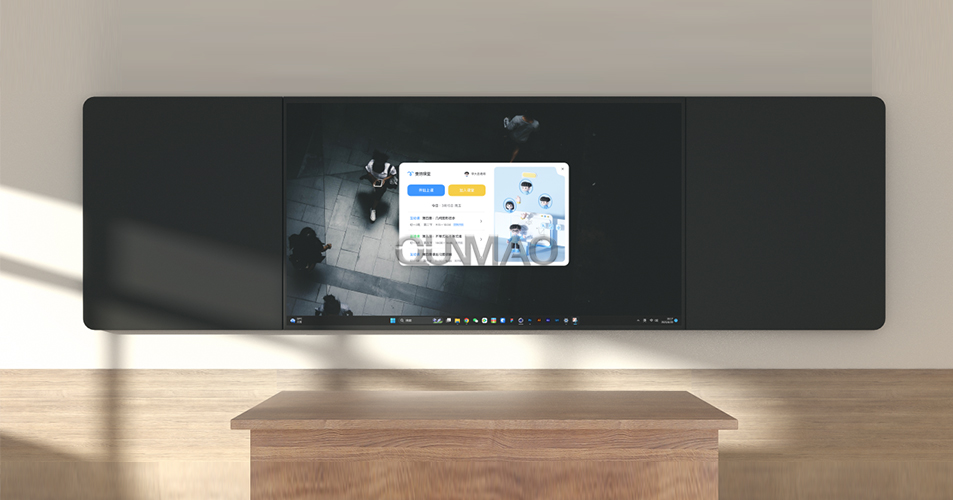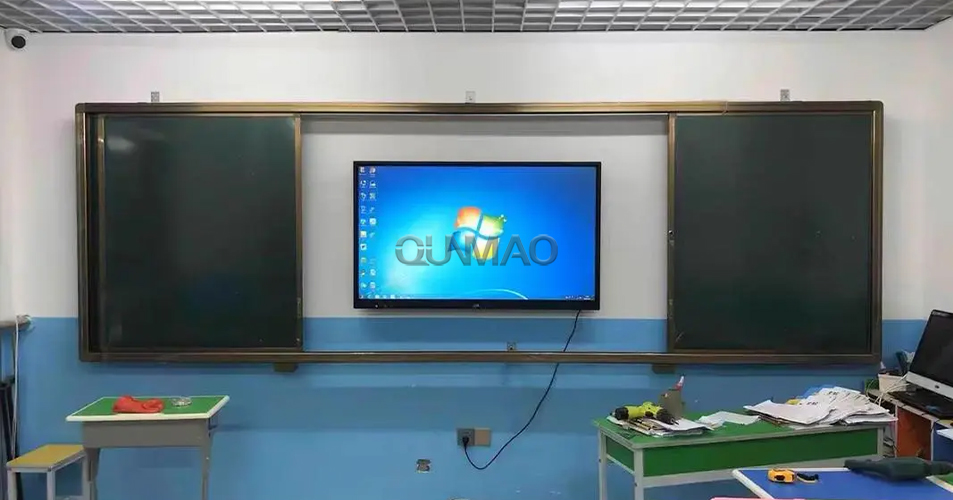In today's education field, multimedia teaching has become the mainstream and development trend. When many colleges and universities
purchase multimedia equipment, they often face the problem of choosing nano smart blackboards and intelligent teaching all-in-one
machines. Both are interactive devices that integrate computer, display, audio and other functions, but they have significant differences
in functional characteristics, imaging clarity, cost of use, application environment and convenience. This article will compare the two
devices in detail to help users make a more informed choice.

First of all, from the perspective of functional characteristics, the interaction principles of nano smart blackboard and teaching
all-in-one machine are different. The all-in-one teaching machine uses infrared touch technology, while the nano smart blackboard
uses improved capacitive touch technology, namely nano touch. The nano blackboard achieves touch sensing through the internal
nano touch film and does not require the transmitting/receiving lines of the infrared screen, so it can be mimicked and flat and look
the same as an ordinary blackboard. At the same time, the nano blackboard retains the chalk writing function of the traditional
blackboard, which is an indispensable part of teaching.
Secondly, in terms of imaging clarity, both use 2K high-definition display technology to ensure clear images and full colors.
However, all-in-one teaching machines have shortcomings such as large radiation and dazzling screens in integrated machine
teaching, which have a certain impact on vision. Nano blackboards perform better in this regard. Nano coatings are added to
their surfaces, which can filter 80% of harmful light and effectively protect users' vision.

Furthermore, the cost of use is also an important issue that users are concerned about. When first purchased, the price of a nano
smart blackboard of the same size is slightly higher than that of an all-in-one teaching machine, but with the mass production of
large-size touch screens, the price gap will gradually narrow. In practical applications, the service life of the nano smart blackboard
exceeds 50,000 hours, while the teaching all-in-one machine has a service life of approximately 40,000 hours. Therefore, users
should consider factors such as purchase cost, service life, and application environment when choosing.
In terms of application environment, the all-in-one teaching machine is suitable for interactive modes that do not require chalk
writing, while the nano smart blackboard has both chalk and touch screen interactive functions, which can meet more diverse
teaching needs.

Finally, from the perspective of convenience, although both products integrate display and touch functions and are relatively
easy to install and debug, the nano smart blackboard is more convenient to use and maintain. All-in-one teaching machines
usually adopt a push-pull blackboard design, which increases the complexity and physical consumption of teachers' classes.
The modular design of the nano smart blackboard makes maintenance and upgrades easier.

When choosing multimedia teaching equipment, the nano smart blackboard of Shenzhen Qunmao Display Technology
Co., Ltd. has become the first choice of many educational institutions due to its unique advantages. Qunmao Display
Technology Co., Ltd. is committed to providing high-quality, innovative display equipment to help educational institutions
improve teaching efficiency and quality. Whether in terms of functional features, imaging clarity, cost of use, application
environment or convenience, the nano smart blackboard has demonstrated its excellent performance and advantages,
providing an ideal solution for modern education.
